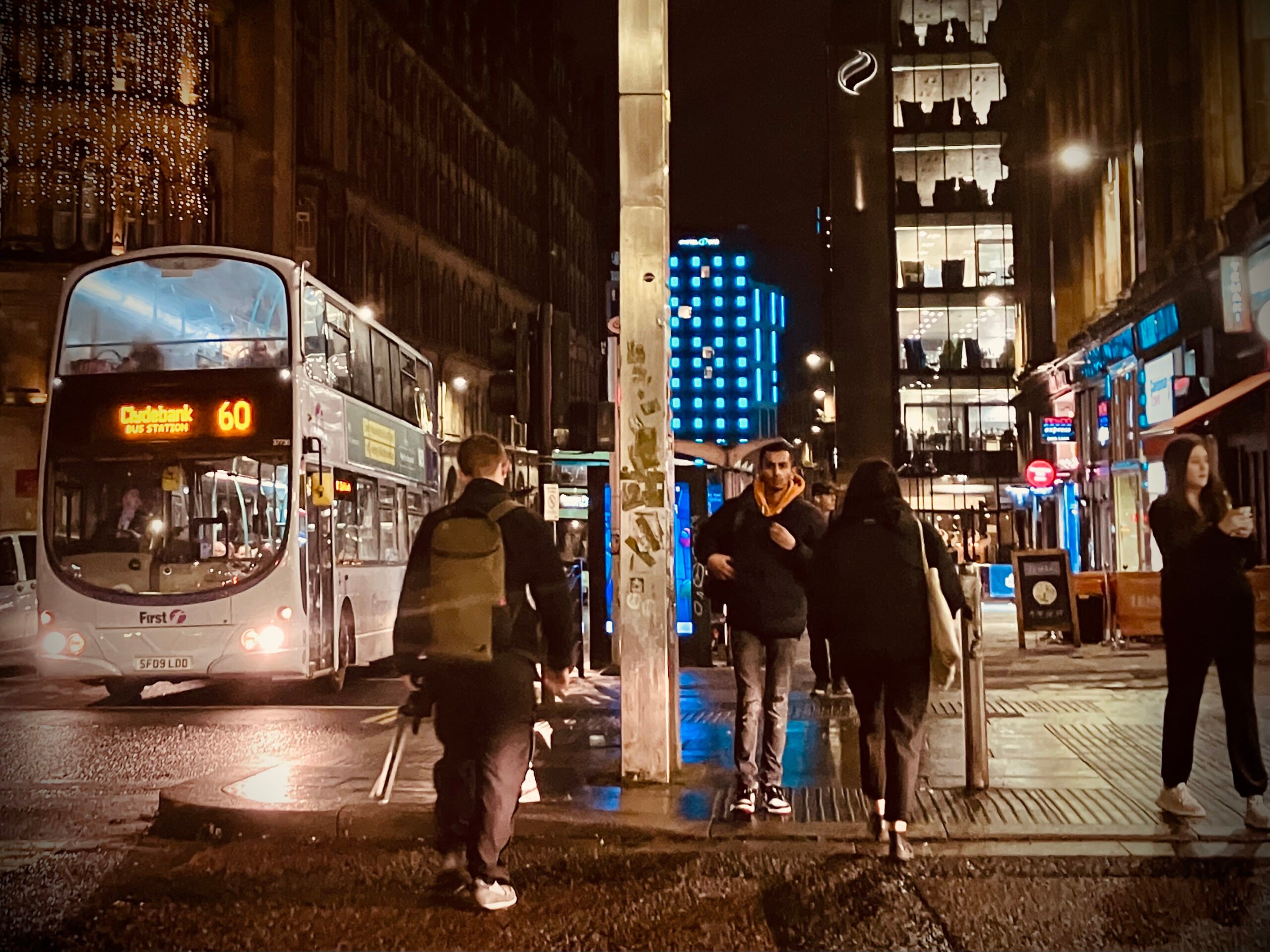
The most common barrier to using a bus to get to the theatre was timetables not matching performance times
Photo: TW Photography via iStock
Venues urged to adopt ‘theatre bus’ scheme to tackle emissions
With audience travel a major source of carbon emissions for theatres, a recent report suggests venues can use their position as a ‘trusted messengers’ to encourage public transport usage.
Theatres should consider working with community transport groups to offer bus services that run directly to the venues and align with performance times, a recent report has suggested.
The Transforming Audience Travel Through Art project run by Perth Theatre and Concert Hall (PTCH), Creative Carbon Scotland (CCS) and artist Helen McCrorie aimed to address the environmental impact of audiences travelling to and from cultural venues.
Despite one-third of cultural organisations aiming to become net zero by 2030, an analysis by Creative Carbon Scotland found that in 2022/23, just 16 out of 131 organisations reported details of audience travel.
READ MORE:
For those 16 venues, audience travel was often the largest source of emissions associated with their work, responsible for 12,163 tonnes of CO2e and amounting to 140% of the "core emissions" reported by all 131 organisations.
Through a range of surveys, creative activities and conversations, PTCH found that while most people travelled to the venue by car, with over half of all responses given being single household car travel, when asked how they would most like to make the trip, the picture was much more mixed, with the bus becoming the most popular option.
The most common barriers referenced to using a bus service were journey times and timetables not matching performance times as well as access to and reliability of transport options.
The report said that PTCH audiences were enthusiastic about a bus service that would run directly to venues and align with performance times, with the possibility of tickets for the bus integrated with purchasing tickets for performances.
Noting that the cost of running evening bus services can be expensive, the report suggests venues work with community transport groups that tend to have more availability in the evenings and for whom improving mobility is part of their core mission.
Theatre bus
In the UK, there are already precedents for the ‘theatre bus’ concept, such as Chichester Festival Theatre, which works with community transport groups to run free services from four nearby locations for selected performances.
A spokesperson for CFT told Arts Professional that the trial was part of an effort to help reduce transport challenges and enable more people to see a show in Chichester without having to rely on a car.
“The trial CFT Theatre Bus we ran earlier this year was hugely appreciated by the people who travelled in it, so we’re very grateful to our local community transport partners Chichester Book A Bus, Community Transport Sussex and Selsey Venture Club for enabling us to develop this initiative which helps us both to be more sustainable and increase accessibility for our audiences,” said the spokesperson.
“The service is available for specific dates and performances from selected local locations and Chichester Railway Station; so far, 53 people have booked in advance for the service, and we often see others taking note for the future and sometimes joining the bus on its return journey.”
Elsewhere, in Perth, Glenfarg Community Transport runs a minibus service to certain performances, while Aberdeen Performing Arts trialled a theatre bus service in 2017-18 with Stagecoach and Firstbus subsequently operating a bus discount scheme with Firstbus for show attendees. Organisers of the pilot stressed the importance of running the service for a significant period to build awareness and for people to consider using this alternative to their usual travel modes.
Other short-term suggestions for reducing audience travel emissions were developing a system to enable car-sharing, using status as a "trusted messenger" to link to travel advice in booking confirmation emails, trialling earlier end times for productions and providing travel information screens with bus and rail times in theatre foyers.
Join the Discussion
You must be logged in to post a comment.